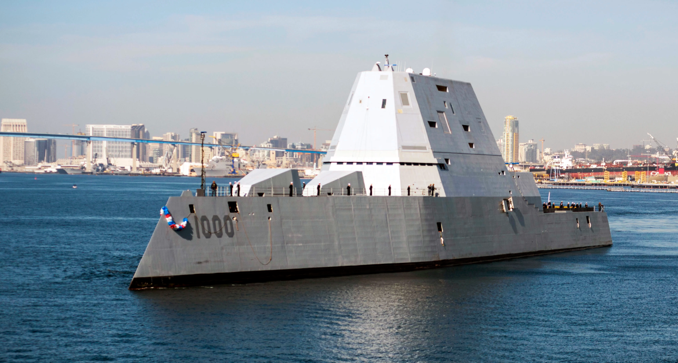Hypersonic weapons travel at five times the speed of sound and are designed to hit any target in the world in about an hour. Russia and China have been leading the charge into the development and deployment of this next-generation weapon system.
The head of US Naval Sea Systems Command, Vice Adm. Thomas Moore, told an audience last month that Arleigh Burke-class destroyers could be getting a new launcher that would be designed for hypersonic weapons.
“Vertical launch system has been a real game changer for us. We can shoot any number of things out of those launchers,” Moore said.
“We’ll probably change those out and upgrade them for prompt strike weapons down the road.”
Allowing launchers to fire hypersonic missiles on destroyers would considerably increase the effectiveness of the Navy’s strike capabilities. Current weapons on these vessels include Tomahawk Land Attack Missile, is a subsonic missile that can easily be defeated by Russia and China.
There are 66 Arleigh Burke-class destroyers in service with the Navy. In the last 8 to 12 months, the Navy has ramped up its freedom of navigation missions with these ships across the South China Sea, sometimes 12 nautical miles away from China’s militarized islands.
Thomas Callender, a retired submarine officer and analyst with the Heritage Foundation, said the Pentagon had spurred programs to field hypersonic weapons that can strike Russia and China. These weapons would likely be placed on submarines first, then on surface ships.
“They’re looking at putting hypersonics on submarines first because where you can get access,” Callender said. “You can potentially then put them on surface ships as an added capability for them, but the submarines would be the priority for access and the ranges you can achieve.”
The Navy has begun sea trials of the next-generation of guided missile destroyers, called USS Zumwalt (DDG-1000), will likely replace the destroyers in the next five to ten years and has larger missile tubes that could fire hypersonic missiles, former Surface Warfare Director Rear Adm. Ron Boxall told Defense News last year.
Boxall said larger missile tubes allow more missiles to be stored into each cell, but can also be used to store larger hypersonic weapons.
“We are going to need, we expect, space for longer-range missiles,” he said. They are going to be bigger. So the idea that you could make a bigger cell, even if you don’t use it for one big missile, you could use it for multiple missiles — quad-pack, eight-pack, whatever.”
The Navy is working with the Army to develop a booster for hypersonic missiles, and the Army teamed up with the Navy and Air Force to build a hypersonic glider that can outmaneuver the world’s most advanced missile defense shields.
China has had several successful hypersonic missile tests in the last 12-months.
Russia announced the deployment of its Kinzhal hypersonic missile in May.
A December 2018 US Government Accountability Office (GAO) report warned that the current ballistic missile defense system in the US is powerless against hypersonic missiles from Russia and China.
US Air Force Lt. Gen. Samuel Greaves, director of the Missile Defense Agency, said last year that he supports Undersecretary of Defense for Research and Engineering Michael Griffin’s push to develop space-based sensors that would defend the nation from hypersonic attacks by America’s adversaries.
“The hypersonic threat is real, it is not imagination,” Lt. Gen. Greaves explained last summer at the Capitol Hill Club.
Griffin warned that the US could be falling behind in hypersonic arms race.
“In the last year, China has tested more hypersonic weapons than we have in a decade. We’ve got to fix that.”
The newest indication from the US Navy is that hypersonic missiles could be deployed on destroyers and submarines in the early 2020s to counter Russia and China.
via ZeroHedge News https://ift.tt/307LUAc Tyler Durden

